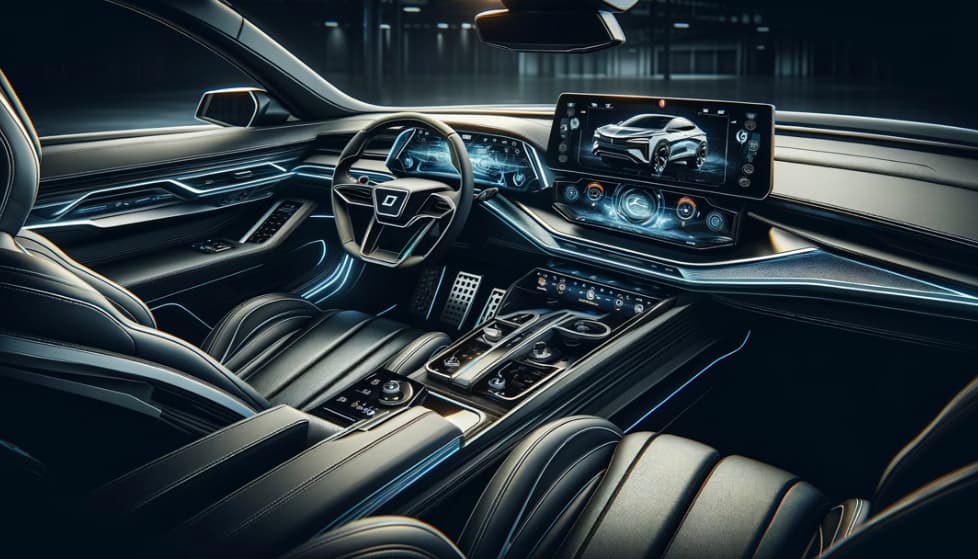Interior Car Design: Elevating Comfort and Style
The realm of automotive interior lighting, once a modest aspect of car design, has blossomed into a domain where technology, aesthetics, and innovation converge. This article explores the intricate evolution, diverse types, and the increasingly pivotal role of automotive interior lighting in enhancing the driving experience.
Historical Perspective: From Function to Fashion
The journey of automotive interior lighting began with basic, functional illumination provided by incandescent bulbs. These lights were solely intended to illuminate the car’s interior during night drives. As automobile design evolved, so did interior lighting, shifting from purely functional to a blend of functionality and aesthetics. Today, interior lighting is not just about visibility; it’s about setting the mood, personalizing the space, and augmenting the overall driving experience.
Diverse Types of Automotive Interior Lights
Modern vehicles boast a variety of interior lights, each designed for specific purposes:
- Dashboard Lights: Essential for driver information, these lights have evolved from simple backlit gauges to sophisticated, LED-enhanced displays, providing clearer and more energy-efficient visibility;
- Ambient Lighting: Beyond functionality, ambient lighting is about creating an experience. It allows for color and intensity customization, enabling drivers to tailor the cabin atmosphere to their preferences;
- Dome and Map Lights: These ceiling-mounted lights offer general and focused illumination, respectively, catering to varied lighting needs within the vehicle;
- Door and Footwell Lights: Enhancing safety and convenience, these lights illuminate entry points and the cabin’s lower areas, aiding ingress and egress;
- Glovebox and Trunk Lights: Small but crucial, these lights improve visibility in storage areas, a subtle yet significant aspect of interior design;
- Reading Lights: Often integrated with dome lights, these provide focused lighting for passengers, enabling activities like reading without disturbing the driver.
The Multifaceted Role of Advanced Interior Lighting
Advanced interior lighting systems in automobiles are not just about illumination; they encompass safety, functionality, aesthetics, and personalization:
- Safety: Enhanced visibility within the vehicle contributes to overall safety, particularly under low-light conditions;
- Functionality: Intuitively designed lighting systems ensure key controls and areas are easily accessible and visible;
- Aesthetics: Interior lights play a significant role in the car’s design, creating an inviting and comfortable ambiance;
- Personalization: The advent of customizable LED lighting allows drivers to personalize the interior to reflect their mood or style.
Technological Advancements: Steering Towards a Brighter Future
The shift from incandescent bulbs to LEDs marked a turning point in automotive interior lighting. LEDs offer longevity, reduced energy consumption, and allow for innovative design and placement. The integration of smart technology enables control of lights through mobile apps or the car’s infotainment system, adding a layer of convenience and customization.
Emerging Trends in Automotive Interior Lighting
The future of automotive interior lighting is poised to be even more dynamic and integrated. Some emerging trends include:
- OLED Technology: Offering greater design flexibility, OLEDs enable the creation of unique lighting effects, setting the stage for future innovations in automotive lighting;
- Interactive Lighting: Future lighting systems could adapt to various factors such as the driver’s mood, time of day, or even respond to music, creating a more personalized and immersive experience;
- Health and Wellness Integration: Lighting systems that can adjust color temperature in sync with the driver’s circadian rhythms could play a role in reducing fatigue and enhancing alertness;
- Autonomous Vehicle Integration: As self-driving cars advance, interior lighting will become a crucial communication tool, indicating vehicle status and enhancing passenger experience;
- Mood-Based Lighting: Lighting that changes based on the occupants’ mood, detected through biometric sensors, could offer a new level of personalization;
- Augmented Reality Integration: Future interior lights could integrate with augmented reality systems to display information or navigation cues directly within the cabin space;
- Energy-Efficient Innovations: Continued advancements in energy-efficient lighting will be essential as the automotive industry moves towards electric and hybrid vehicles.
Challenges and Considerations
As automotive interior lighting advances, several challenges and considerations arise:
- Regulatory Compliance: Ensuring new lighting technologies comply with safety and regulatory standards is crucial;
- Cost and Accessibility: Balancing innovation with cost-effectiveness is vital to make advanced lighting technologies accessible to a broader range of consumers;
- Sustainability: As environmental concerns grow, developing sustainable lighting solutions that minimize energy consumption and carbon footprint becomes imperative.
Conclusion
Automotive interior lighting has transformed from a basic utility to a sophisticated element of modern car design. It plays a multifaceted role, enhancing safety, functionality, aesthetics, and personalization. As technology progresses, interior lighting will continue to evolve, offering more interactive, health-focused, and integrated solutions. This evolution reflects the automotive industry’s broader trends towards personalization, sustainability, and advanced technology, positioning interior lighting not just as a feature of the car but as an integral part of the driving experience. The future of automotive interior lighting shines bright, promising innovations that will redefine how we perceive and experience mobility.

Leave a Reply